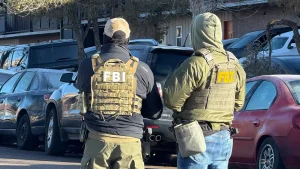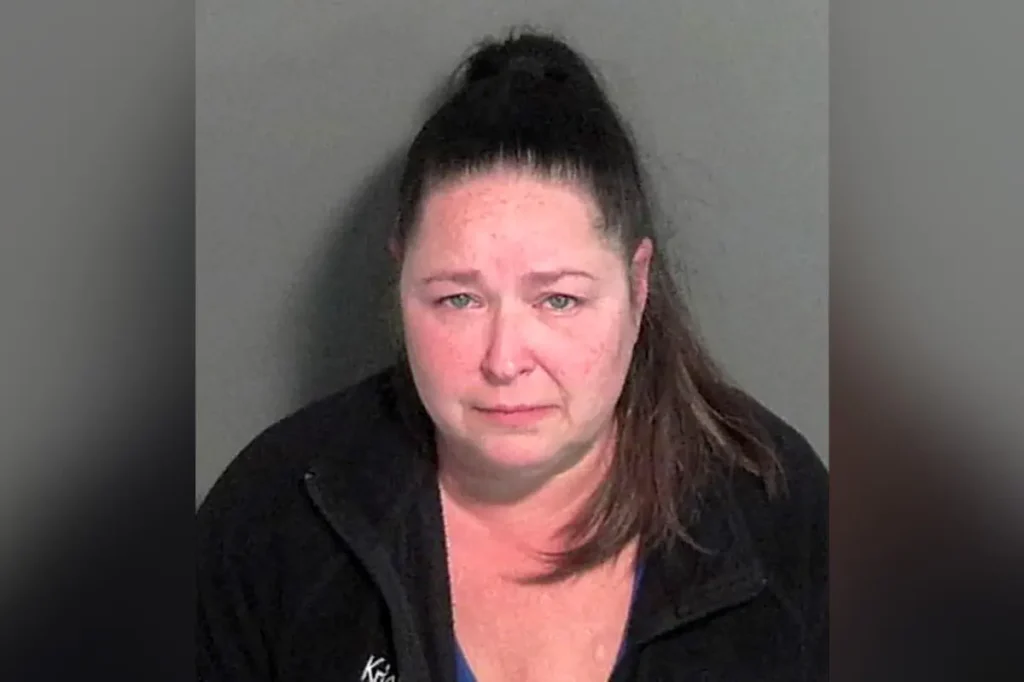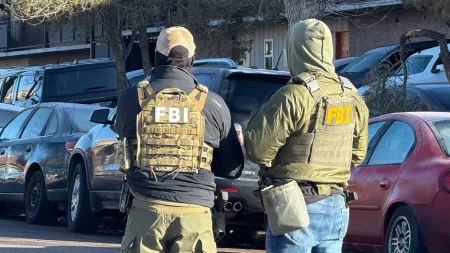Tragedy in Louisiana: A Family Torn Apart by a Fatal Morning Accident
In a devastating incident that has shaken the community of Slidell, Louisiana, a family is facing an unimaginable tragedy after 55-year-old Kristen Anders allegedly struck and killed her 5-year-old grandson, Carson Lawson, while backing out of her driveway on Tuesday morning. Police Chief Daniel Seuzeneau described the incident as “any parent’s worst nightmare,” highlighting the profound grief now enveloping this family. The accident occurred around 7 a.m. as young Carson was waiting for his school bus, and his grandmother was leaving for work in her 2016 GMC Yukon. Authorities believe Anders was unaware of her grandson’s presence in front of her vehicle when the collision occurred, but the situation took a more complicated turn when investigators determined she was allegedly under the influence of alcohol and sedatives at the time of the accident.
The community of Slidell, located about 28 miles northeast of New Orleans, has been deeply affected by this tragedy. Police Chief Seuzeneau expressed the emotional weight of the situation not only for the family but also for first responders who arrived at the scene. “This is a very tragic situation for this family,” he explained during a press conference, “because not only did they lose their precious 5-year-old child, they’re also having to deal with the fact that the grandmother is now under arrest for this incident.” The dual trauma of losing a child while simultaneously facing the arrest of a beloved family member has created layers of grief that the family must now navigate. Carson, who had just celebrated his fifth birthday in June, leaves behind a family now forced to confront an unthinkable loss compounded by complicated circumstances.
According to police reports, Anders immediately stopped her vehicle after realizing what had happened and has been cooperating with investigators throughout the process. Despite her cooperation, authorities made the decision to arrest Anders at the scene on charges of vehicular homicide based on evidence suggesting impairment. This creates a particularly heart-wrenching situation where a family member responsible for caring for a child is now legally implicated in that child’s death, despite what appears to be a tragic accident rather than any intentional harm. “It’s safe to say that I don’t think anybody believes that she knew the child was in front of her car,” Chief Seuzeneau acknowledged, highlighting the accidental nature of the incident despite the serious charges filed.
The ripple effects of this tragedy extend beyond the immediate family. First responders who arrived at the scene were visibly affected by what they encountered, with Chief Seuzeneau noting, “This affects everyone. This hits home hard for all of us and all of the first responders who were at that scene.” Such incidents involving children are particularly difficult for emergency personnel to process, often requiring additional support and debriefing. The community at large has also been impacted, as neighbors and friends attempt to support a family dealing with both grief and the criminal justice implications of the incident. Schools in the area may need to provide counseling for classmates of the young boy who now face the difficult concept of a friend who won’t be returning to class.
The medical examiner’s office has scheduled an autopsy for later this week, which will provide more details about the precise cause and circumstances of Carson’s death. These findings may play a significant role in the ongoing investigation and any subsequent legal proceedings. The case highlights several overlapping public safety concerns, including the dangers of impaired driving, visibility challenges around driveways and residential areas, and child safety during morning school bus routines. While authorities continue their investigation, they must balance the enforcement of laws regarding driving under the influence with sensitivity toward a family experiencing profound loss and complicated grief.
As the investigation progresses, this case raises difficult questions about accountability, forgiveness, and how communities support families facing both criminal charges and devastating loss simultaneously. Anders now faces serious legal consequences while simultaneously grieving the loss of her grandson—a dual burden that few can comprehend. Meanwhile, Carson’s parents and other family members must somehow process not only the sudden absence of a child described as “precious” but also reconcile their feelings toward a grandmother whose alleged impairment may have contributed to this tragedy. The community of Slidell will likely rally around this family in the difficult days ahead, as they navigate funeral arrangements, legal proceedings, and the long journey of healing from a morning that irreversibly changed the trajectory of their lives.










